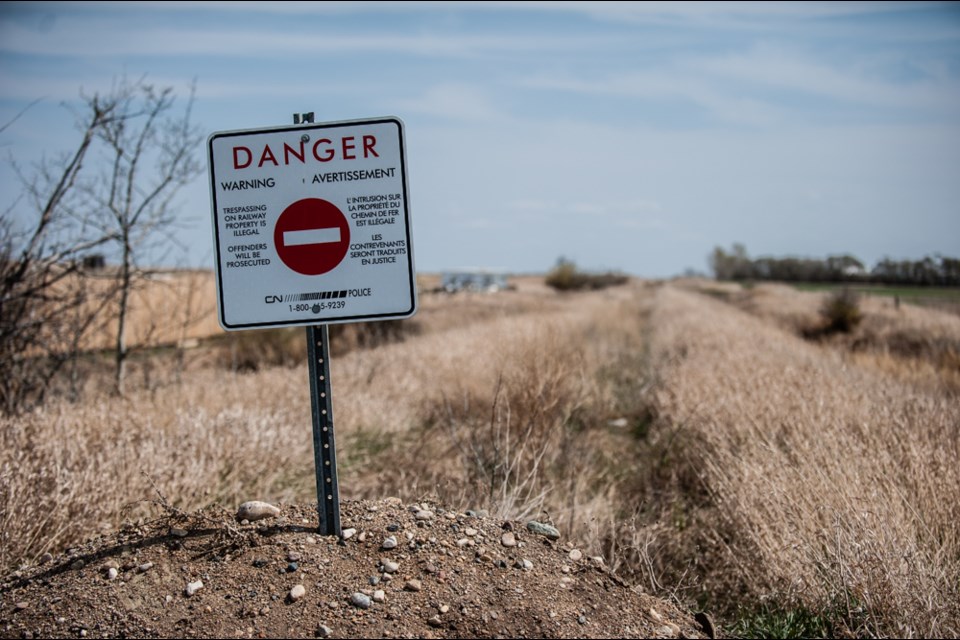Regina – If you spend enough time looking at the satellite photos on Google Maps, one might realize that there was once a rail line that ran from Lampman, near Stoughton to Northgate and connected to the BNSF.
That’s an important consideration when you realize that the largest crude-by-rail loading facility in southeast Saskatchewan is Crescent Point’s Stoughton facility, located on the Stewart С����Ƶern Rail shortline, and there’s been a new commodity hub getting its feet under it at Northgate owned and operated by Ceres Global Ag.
Ceres, by the way, owns a quarter of Stewart С����Ƶern Rail.
Pipeline News spoke to James Baker, a Regina railway consultant, who worked with Ceres on crude-by-rail plans for Northgate. He was one of the speakers on April 29 at the Williston Basin Petroleum Conference.
Pipeline News: Since Ceres actually owns a chunk of Stewart С����Ƶern Rail, they could (rebuild that line), or Crescent Point could. Is there anything to that? Are you tied into Ceres at all?
James Baker: I’m just a consultant. I’m a consultant to them, and a lot of my work was on the oil draw. So when you talk about is there the potential to move oil from any place south of Stoughton, and say within 100 miles and east-west, that makes sense (to ship to Northgate). When you look at trucking costs and NGLs, that makes sense.
P.N.: What about connecting that gap there?
Baker: Absolutely. There have been many conversations by many different companies, including rail companies. One of the biggest deterrents is the cost of that – to rebuild that 90 kilometre section.
P.N.: Compared to the cost of building a new pipeline, the right-of-way is already there. All you basically have to do, pack a bit more, and put rail on it. Compared to how much infrastructure costs in the oil patch, it’s actually pretty cheap, especially if you’re moving a unit train a day.
Baker: Absolutely. If you’re asking if I’m involved with something like that? My answer is no. Have I heard conjecture that other people are involved in looking at that, I would have to say yes I have heard that.
P.N.: If something did happen, and I realize you’re not actually doing that, what would be the impact by С����Ƶ able to short circuit the Canadian mainlines and go straight to the BNSF, bringing Canadian oil out of the southeast?
Baker: Let’s put it this way: I forget the exact number of miles BNSF has in the U.S., but is probably 235,000, and access to 40 different refineries. I would say that happening would be good for everybody. Canadian oil having access to U.S. refineries, as opposed to backhauling to a CN line, heading east, heading south, getting caught in congestion, crossing the border, you’re absolutely right.
P.N.: At $100 a barrel, if it costs, let’s say $15 to move on rail, okay, we can eat that. A month ago, when it was $44 a barrel, that hurts. So what are the economics of crude-by-rail now?
Baker: In my estimation, the economics do not work. Having said that, rail companies or logistics companies never build a rail facility with the market as it sits today. They’re looking to the future. These are 50 year facilities, or whatever they are. Maybe longer. Look how long Canadian National Railway has been there. So they’ll wait for the opportunity. In the meantime, they will look at other opportunities to create revenue – loading grain, NGLs. They’re loading propane already. You name it. Bring frac sand back in, maybe fertilizer. There’s other opportunities while you wait.
P.N.: What WTI price do we need to see crude-by-rail make sense?
Baker: I haven’t made that calculation, but I’m guessing $70 a barrel, to make it work, depending on your end destination.
P.N.: I’ve heard $15 a barrel for crude-by-rail?
Baker: It varies. I would say $10 to $15, $12.50 to $15, Canada to the U.S. Those numbers vary. I think what you’ll see from the rail companies is if they see they’re revenues drop, they’ll drop their prices to compete with the pipelines.
P.N.: Do you think, by doing a short-circuit down to BNSF, you could cut that by 10, 20 per cent?
Baker: The possibility exists, for sure. I think with the capital costs initially, maybe not. But over time, certainly you could have cost efficiencies.
P.N.: What sort of efficiencies could there be?
Baker: All you need, sometimes, is $3 or $4 a barrel and you’re in the game.
P.N.: Could this do that?
Baker: Could happen.




